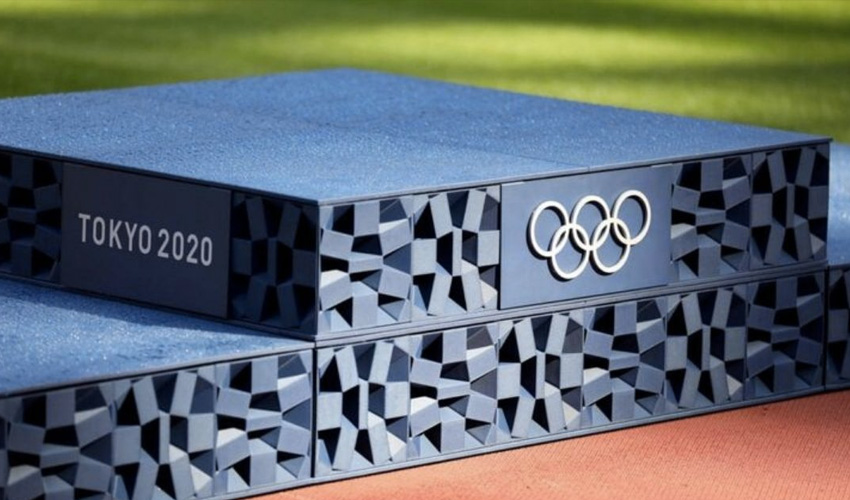Tokyo Olympics Medal Ceremony Podiums 3D Printed Using Recycled Plastic

The various applications of additive manufacturing have become increasingly broad. For instance, 3D printing is now used in aeronautics, automotive, fashion, food, even in the world of sports. Now, for the first time in its history, additive manufacturing is coming to the Olympic and Paralympic Games! For this summer’s Olympic Games in Tokyo, Protect & Gamble, in partnership with the organizing committee and the International Olympic Committee (IOC), developed 98 3D-printed podiums, the number planned for awarding medals to athletes. As part of the Tokyo 2020 Podium Project, each podium was manufactured using recycled plastic contributed by the public and recovered from the oceans.
Acclaimed designer Asao Tokolo, who is also behind the Tokyo 2020 emblems, created the 3D printed podiums to represent Japan, its traditions, and the values of the Olympic Games. In fact, through the design and colors used, including the traditional indigo dye, Tokolo wanted to embody the evolution of Japan while he recalled the country’s history. The structures were printed from recycled plastic, a way of symbolizing the Olympic Games organizers’ commitment to the environment.

The podiums were 3D printed using recycled plastics. (Photo Credit: International Olympic Committee)
3D Printed Podiums Made From Recycled Plastic
To promote sustainable development, the podiums were made using recycled plastics. To do this, Procter & Gamble and the International Olympic Committee collected plastics from schools, stores, and offices. In addition, the Olympic partner has also recovered large amounts of plastic from the oceans, as part of the #CleanOceans program launched by UNEP (United Nations Environment Program). This recycling campaign focused on responsible consumption, recovered enough material to print the 98 structures. “Sustainability is at the heart of this effort, and P&G is proud to work with Tokyo 2020 and the IOC to demonstrate how consumers can participate in reducing plastic waste,” says Marc Pritchard, P&G Chief Brand Officer.
The primary goal of the Podium Project was to gather 1.5 million pieces of plastic packaging, made of polyethylene and polypropylene plastic, collected from consumers to produce recycled plastic resin. In doing so, 75 grams of carbon dioxide will be saved for each piece of plastic recycled through the program. More specifically, the 1.5 million pieces of plastic collected through the program will ultimately save enough energy to light a normal household for 112 years. Marie Sallois, department director in charge of organizational development, branding, and sustainability at the IOC, concludes: “The Tokyo 2020 Podium project is an excellent example of how the Olympic Games can inspire sustainable change in the host city and country. We are very excited to see this project take shape, adding to our global efforts to tackle plastic waste. The IOC will continue to work closely with the Tokyo Organising Committee to ensure that sustainability is an integral part of the Olympic Games 2020 and the legacy that they create.”
What do you think of the Olympic Game’s 3D-printed podium? Let us know in a comment below or on our Facebook and Twitter pages. Don’t forget to sign up for our free weekly newsletter, with all the latest news in 3D printing delivered straight to your inbox!
Cover Photo Credit: International Olympic Committee






